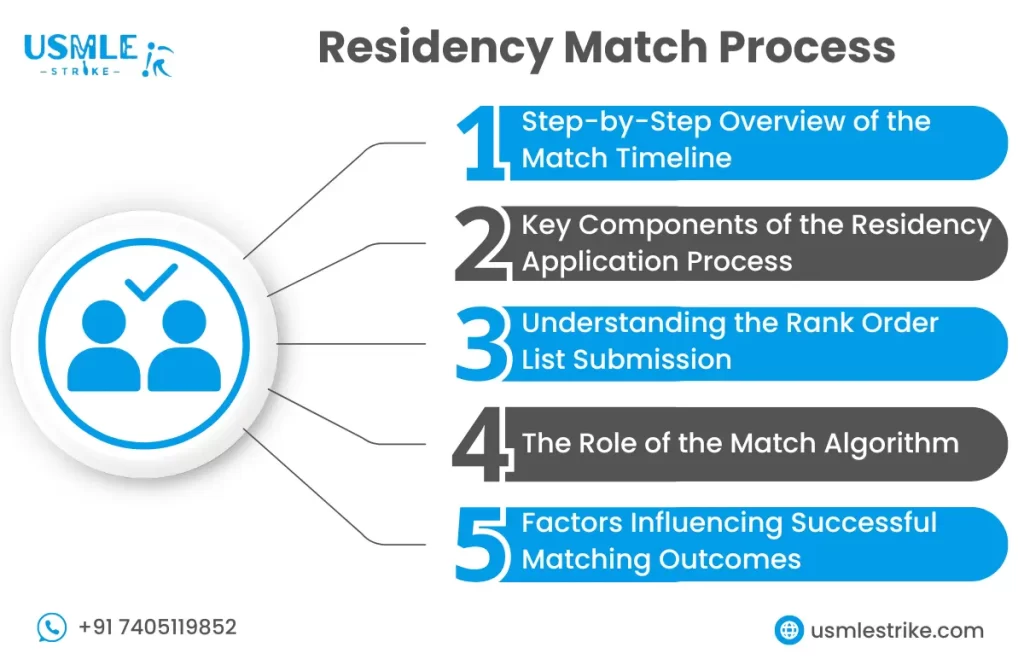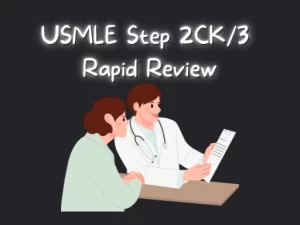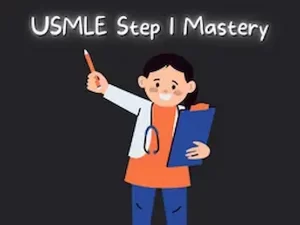Navigating the process of matching into a residency program can be one of the most pivotal experiences in a medical professional’s career. Understanding Residency Match Programs is crucial for successfully transitioning from medical school to residency. This post provides a detailed overview of the key elements involved in the match process, including timelines, schedules, and tips for success.
What is the Match?
- Definition: The Match refers to the process through which U.S. medical school graduates and international medical graduates (IMGs) are placed into residency programs.
- NRMP: Managed by the National Resident Matching Program (NRMP), the Match uses a computerized system to pair applicants with residency programs based on preferences.
- Timeline: The Match process typically occurs annually, culminating in Match Day, when applicants learn where they will spend their residency training.
- Rank Order Lists: Applicants submit a rank order list of preferred programs, while residency programs rank their preferred candidates.
- Algorithm: The NRMP uses an algorithm to match applicants and programs based on these rankings, ensuring the best fit for both parties.
- Importance: Successfully matching into a residency program is crucial for medical graduates, as it determines their specialty training and future career paths.
- Types of Matches: Includes the Main Residency Match and Supplemental Offer and Acceptance Program (SOAP) for unmatched applicants.

How Does Match Day Work?
| 🌟 Stage | Details |
| 📅 Preparation | Review the Residency Match Day Schedule to understand timelines for interviews, rank submissions, and the match announcement. |
| 📣 The Announcement | On Match Day (typically mid-March), students receive their match results and discover their assigned residency program. |
| 🎉 Match Day Activities | Medical schools host celebrations where students, faculty, and families come together to share and celebrate the exciting news. |
| 🔒 Results Access | Access match results securely via the NRMP’s online portal once they are officially released. |
| 🔄 Post-Match Options | Students who don’t match can enter the Supplemental Offer and Acceptance Program (SOAP) to apply for unfilled residency positions. |
Understanding the Residency Match Programs
What Are Residency Match Programs?
Residency Match Programs are systems designed to pair medical graduates with residency positions in hospitals and clinics. Managed by the National Resident Matching Program (NRMP) in the U.S., these programs use an algorithm to match applicants with residency programs based on both parties’ ranked preferences.
The Match Algorithm
The match algorithm ensures a stable match by considering the ranked preferences of both applicants and programs. It aims to place applicants in programs that best fit their interests while also meeting the needs and preferences of the residency programs.
Types of Match Programs
Different specialties may use various match systems, including the NRMP, the American Osteopathic Association (AOA), and specialty-specific matches. Each system follows its own procedures and timelines but generally adheres to similar principles of matching based on preferences.
Key Components of the Match Process
- Rank Order List (ROL): Applicants and programs submit their ROLs, listing their preferences. The algorithm then processes these lists to find the best matches.
- Interviews: Before submitting ROLs, applicants interview with residency programs to determine fit and preferences.
- Match Day: This is the day when applicants find out where they have matched for their residency.
How Do I Match into a Residency Program?
The Residency Match Program is a crucial process for medical students and graduates seeking to secure a residency position in their chosen specialty. Here’s how you can successfully navigate the Residency Match Program:
- Complete your Medical Degree: Ensure you graduate from an accredited medical school, as it’s the foundation for eligibility.
- Prepare for the USMLE: The National Resident Matching Program requires completion of exams like USMLE Step 1 and Step 2, demonstrating your medical knowledge.
- Submit Your Application: Apply to multiple programs through the Residency Match Program using ERAS (Electronic Residency Application Service).
- Obtain Letters of Recommendation: Strong letters from faculty or mentors play a vital role in your application’s success.
- Write Your Personal Statement: This is your opportunity to showcase your motivation and suitability for the program.
- Participate in Interviews: If selected, you will be invited to interviews where you can further demonstrate your qualifications.
- Rank Your Programs: After interviews, rank your preferred residency programs. The Residency Match Day Schedule depends on these rankings and the program’s preferences.
- Stay Compliant with Deadlines: Keep track of all application deadlines and steps to ensure you’re eligible for the match.
Residency Match Timeline 2025
The Residency Match Timeline 2025 is a step-by-step schedule that marks the key dates for applicants in the National Resident Matching Program. Make sure you follow this timeline to stay on track:
- June 2024: Begin preparing for your Residency Match Program application by completing clinical rotations and gathering necessary documents.
- September 2024: Start applying for residency programs via ERAS, making sure all supporting materials are submitted.
- October 2024 – January 2025: Attend interviews, which typically occur during these months, and engage in final rounds of interviews.
- February 2025: Finalize your rank order list. This is where your preferences are submitted to the National Resident Matching Program.
- March 2025: The Residency Match Day Schedule takes place, where you find out where you’ve matched for residency. This day is a momentous occasion, often celebrated by students and their families.
- April 2025: Begin preparing for your residency, including completing any required paperwork and understanding the logistics for your matched program.
Ensuring you stay on track with the Residency Match Timeline can help you navigate the complex process and prepare for a successful match!
Residency Match Day Schedule
The Residency Match Day Schedule is a significant event in the residency match process. Here’s what to expect:
The Day Before Match Day
- Pre-Match Day: On the day before, applicants often experience high levels of anticipation and anxiety. It’s important to prepare mentally and ensure that you’re ready for the big day.
Match Day Activities
- Results Release: On Match Day, results are released to applicants, typically through an online portal. Applicants learn where they have matched and can start preparing for their new residency role.
Post-Match Activities
After receiving your match results, the following steps are important:
Residency Onboarding
- Preparation: Begin preparing for your new role by completing any required paperwork, attending orientation sessions, and familiarizing yourself with the new work environment.
Moving and Relocation
- Relocation: If necessary, make arrangements to move to the location of your residency program. This includes finding housing and settling into your new community.
Tips for Success in the Match Process
Preparing Your Application
- Craft a Strong Personal Statement: Your personal statement should reflect your passion for the specialty and your fit for the program.
- Secure Strong Letters of Recommendation: Obtain letters from mentors who can speak to your qualifications and readiness for residency.
Effective Interview Strategies
- Research Programs Thoroughly: Understand the program’s strengths, culture, and faculty to tailor your responses and questions during interviews.
- Practice Interview Techniques: Conduct mock interviews to refine your responses and improve your confidence.
Managing Your Rank Order List
- Prioritize Based on Fit: Rank programs based on your personal and professional preferences rather than just perceived prestige.
- Review and Revise: Ensure that your ROL reflects your true preferences and revise if needed before submission.
Common Challenges and How to Overcome Them
Handling Rejections
- Stay Positive: Not every applicant matches into their top-choice program. Use rejections as a learning opportunity to improve future applications or explore other options.
Navigating the Stress
- Manage Stress Effectively: Develop strategies to manage stress, such as exercise, mindfulness, or talking to peers and mentors.
Balancing Multiple Offers
- Evaluate Offers Carefully: If you receive multiple offers, weigh them based on your career goals, personal preferences, and the fit with each program.
What are the Categories?
Residency match programs help medical graduates secure training positions in hospitals and institutions. These programs typically fall into several categories based on specialties and matching processes. Common categories include categorical programs, offering complete training in a specialty like internal medicine or pediatrics; preliminary programs, which are one-year positions often leading to advanced specialties; advanced programs, starting after completing a preliminary year, such as in radiology or dermatology; and transitional year programs, providing a broad clinical experience for undecided trainees or prerequisites for advanced training. Additionally, there are specialized tracks like couples match, military matches, and international medical graduate (IMG) pathways.
Conclusion
Successfully navigating Residency Match Programs requires thorough preparation, understanding the match timeline, and strategic planning. By following the guidelines outlined in this post, you can approach the match process with confidence and improve your chances of securing a residency position that aligns with your career aspirations. Remember, the residency match process is a crucial step in your medical career, and careful preparation can make a significant difference in achieving your goals.
Read also: Residency Interview Behavioral Questions





